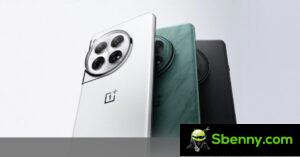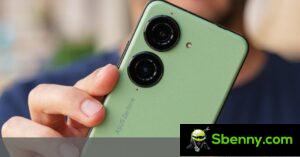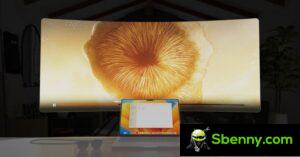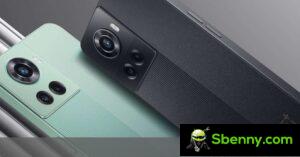introduction
Play the long game. The Nokia X30 slogan suggests that it is important to preserve the environment and Nokia calls it the “greenest phone ever”. This includes recycled (and recyclable) materials where possible, but also a 3 year warranty and software support. And in a lineup without a true flagship as others understand it, the X30 has to shoulder that responsibility.
It’s not a flagship chipset powering the X30 – the Snapdragon 695 is anything but. Not even a non-telephoto camera system screams “high-end.” A few small omissions like stereo speakers and wireless charging still put the X30 in a conventional midrange position.
But for around €450 for the base 6GB/128GB version, you get a pretty good spec sheet. Adequate dust and water protection are still rare in the mid-range, as is Gorilla Glass Victus display protection, both of which are featured here. And since we’ve talked about it, the display is now OLED – it’s been three and a half years since the last such screen on a Nokia.
Back to the cameras and with an already price-adjusted perspective, things don’t seem all that bleak. Notably, the 50MP main unit on the back uses the same sensor as the Galaxy S22 – it’s quite flagship. The other two cameras aren’t quite as impressive – the 13MP ultrawide has no AF and no dedicated ‘macro’ close-ups are apparently off limits, and the 16MP selfie camera is neither here nor there – but it all equals a very reasonable configuration.
“Reasonable” can also describe other aspects of the X30. Small at first glance, the battery capacity should be sufficient for not overly demanding interiors, and the 33W charging capability looks set to deliver fast enough top-ups without going to extremes. Alongside the OLED display, the in-display fingerprint sensor is also back.
The specifications of the Nokia X30 at a glance:
- Body: 158.9×73.9×8.0mm, 185g; Glass front (Gorilla Glass Victus), aluminum frame, plastic back; IP67 dustproof and waterproof (up to 1m for 30 minutes).
- Screen: 6.43″ AMOLED, 90Hz, 450nits (typical), 700nits (peak), 1080x2400px resolution, 20:9 aspect ratio, 409ppi.
- chipsets: Qualcomm SM6375 Snapdragon 695 5G (6nm): Octa-core (2×2.2GHz Kryo 660 Gold and 6×1.7GHz Kryo 660 Silver); Adreno 619.
- Memory: 128GB 6GB RAM, 256GB 8GB RAM; UFS 2.2 – 128GB, UFS 3.0 – 256GB.
- Operating system/software: Android 12.
- Rear camera: Broad (main): 50 MP, f/1.9, 1/1.56″, 1.0µm, PDAF, OIS; Ultra wide angle: 13MP, f/2.4, 123˚, 1/3.06″.
- Front camera: 16 MP, f/2.4, (wide), 1/3.06″, 1.0µm.
- Video capture: Rear camera: 1080p@30/60fps; Front camera: 1080p@30fps.
- Battery: 4200mAh; 33W wired, PD3.0.
- Various: Fingerprint reader (under display, optical); NFC; FM Radio.
Nokia X30 unboxing
As part of our commitment to environmentalism, the Nokia X3 arrives in a half-height recycled brown cardboard box – you know what that means. The charger is missing, but a cable is still provided, and that’s about it. Nokia will sell you a transparent soft silicone case separately (itself packaged in recycled paper), but it is not included with the phone.


Retail Packaging • Optional case
Mind you, there is a lot of paperwork inside the box, which itself required some paper and effort to make, not to mention potentially adding to the overall volume: a quick guide to a page and a QR code with a link to the rest of the stuff online would have seemed (and, perhaps, been) more sustainable. Then again, various regulators might mandate this or that piece of physics literature and thus get in the way of saving a tree, so we’re not ready to blame Nokia.







Start a new Thread